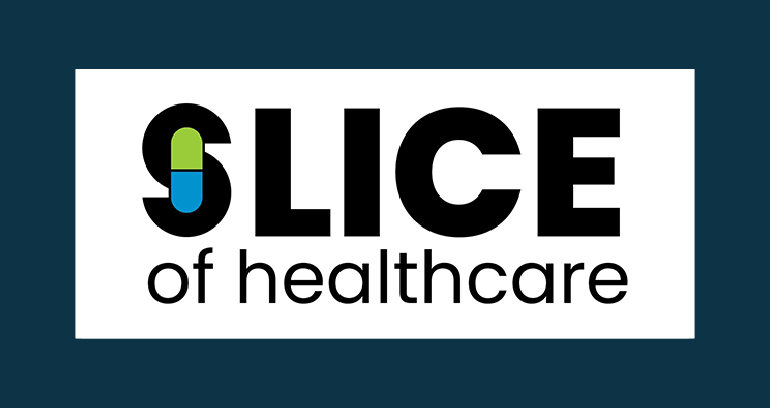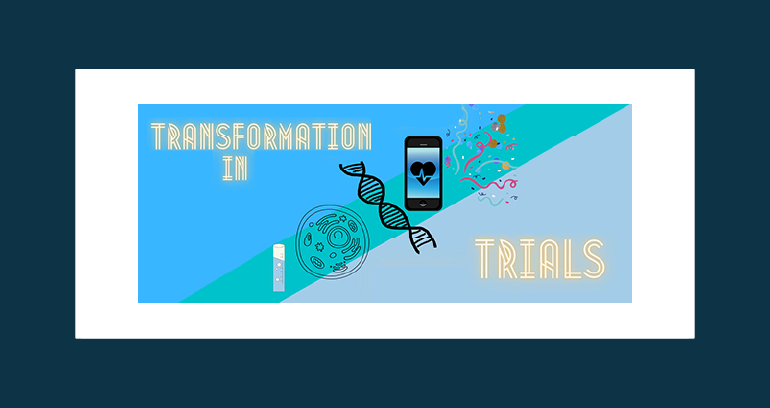
Build vs. Buy Pendulum
Should CROs buy technology capabilities or should they develop them in-house?
This episode of The Pharma Podcast is with guest Raj Indupuri, CEO, eClinical Solutions.
Raj and Sam Tarantino explore the Build vs. Buy Pendulum: Should CROs buy technology capabilities or should they develop them in-house?
Transcript
Sam Tarantino:
Welcome to the pharma podcast, conversations with industry experts and business leaders about important and current topics in Canadian pharma, biotech and MedTech. I’m your host Sam Tarantino. On this episode of the pharma podcast, My guest is Raj Indupuri CEO of eClinical Solutions. Raj, and I will explore the build versus buy pendulum: should CROs buy technology capabilities, or should they develop them inhouse? Raj, welcome to the podcast.
Raj Indupuri:
Thanks Sam for having me, I’m excited to be here considering my background and what we do at eClinical Solutions.
Sam Tarantino:
So, before we discuss the challenge, the build versus pendulum faced by CROs, let’s start by telling us about yourself and eClinical solutions.
Raj Indupuri:
Yes, so I’ve been very fortunate to be in this industry [and] in the life sciences space for more than 24 years. And I started my career as a clinical database developer, a programmer, helping build databases or trial databases and helping with data acquisition and also helping different stakeholders extract value from this data. And over the years, I progressed my career by working at both service providers and also on the sponsor side [and] on the biotech side. I’m really fortunate to be in this space for a long time. More recently, since 2012, I’ve been one of the founders and the CEO of eClinical Solutions. At eClinical, we provide both data services and software to solve several industry challenges, specifically the data challenges, and with the intent to help sponsors of the industry modernize clinical trials and help with the digitization efforts and to help with digital trials.
Sam Tarantino:
So what are… help define the challenges CROs are facing with the build versus buy pendulum as you call it.
Raj Indupuri:
Yeah, I think we all can agree that technology is a key enabler in terms of digitization or in terms of conducting or managing modern clinical trials and CROs have been playing a very critical role helping the industry for the past two decades or so – or more than that, with research. And we have seen with COVID how incredible it was that the industry was able to bring vaccines and also treatments [under] incredibly short timelines, right? And that again demonstrates that there are whole new ways to expedite research. And there are several lessons that we have learned from the successes that we have seen from some of these companies bringing vaccines and treatments to help with the pandemic. So for CROs, there’s now significant pressure from sponsors and other stakeholders, even regulatory bodies and everyone involved with research to reduce cycle time significantly to expedite trials in general and reduce inefficiencies. Because overall, R&D costs, for years and decades, have been significantly high and CROs are under immense pressure, again like I just said, to evolve and reduce cycle times and be more efficient. And the only way that is possible is by adopting more modern, advanced technologies and evolving by leveraging more ways – more new ways – to do research.
Sam Tarantino:
For our audience, would you mind defining a CRO? Some in our audience may not know what CRO stands for and what they do.
Raj Indupuri:
Yeah, definitely, a CRO at a high level is a clinical research organization. And, like I mentioned earlier, CROs play a vital role overall helping the industry with clinical development. If I’m a smaller – or even larger companies, right – companies chose to obviously keep the science, which is their core competency in-house, but often partner with service providers [for] different aspects of research or all parts of the clinical development. So the CRO industry in general has been growing rapidly and has been playing a significant role in bringing or helping industry biotech and pharma and med device companies to bring therapies and treatments much faster.
Sam Tarantino:
So what new demands, challenges are we seeing in the life sciences industry for CROs?
Raj Indupuri:
That’s a great question. So like I just mentioned there is significant pressure from life sciences companies, requiring CROs to reduce the cycle times in terms of the time it would take to build a database or clean the data. I’m talking more from the data aspect of it in terms of the time needed to submit to regulatory bodies. And also there’s always cost pressures, right? So for years the industry has been trying to eliminate inefficiencies with R&D, which has been quite expensive. So one of the reasons the CRO industry has been rapidly growing is to provide more cost efficient ways to do research and they’re always under pressure, again, to reduce cost and deliver at speed. So that actually leads to more pressure on CROs to evolve and again, take advantage of modern technologies to achieve these outcomes.
Sam Tarantino:
So how are you solving some of these data challenges?
Raj Indupuri:
Yeah, so like I mentioned earlier, at eClinical Solutions we are a service and a software provider. On the software side, we have a platform: elluminate. It’s a data analytics platform, which enables you to bring data from any source, any structure, any format into one central hub, providing a very seamless way to transform this raw data into something meaningful. Whether it’s for insights, whether it’s for cleaning, whether it’s for standardization to support submission, right, could be multiple use cases. So we have been helping clients, including CROs, to modernize their data infrastructure. That will in fact help with the outcomes that I talked about earlier, whether it’s reducing inefficiencies or reducing cycle times and overall reducing the cost that’s needed to conduct and manage a clinical trial.
Sam Tarantino:
So how are CROs in your opinion, responding to the increased variety of data from multiple sources?
Raj Indupuri:
Yeah, another great question. So science has been groundbreaking, right? We have seen that with what happened with the pandemic and how the industry has responded. But over the past two decades or so, even though there was a lot of innovation that has happened – lots of tech companies that actually are helping the industry or are part of the industry – there’s still not a lot of transformation that has happened. And even before the pandemic, there was a lot of investment that’s happening in the industry to transform. And so this transformation required companies to come up with modern data strategies, and that required companies to think about modern data technologies. And at the same time trials have been getting extremely complex which was leading into an increased number of data sources being collected by every trial. So with advancement in science, the complexity of trials being increased, the data problem continued to increase as well. And the only way for sponsors or CROs to solve this problem is by modernizing the data infrastructure, and also by investing in digital transformation initiatives. The challenge with CROs is, when compared to sponsors, more complicated. Because when I’m a sponsor, or when I’m a biotech company, I am actually dealing with data for X number of trials, right? There is some kind of standardization, which makes it a little bit easier to deal with the data pipeline and the ingestion, mapping, automation, and analytics. But if I’m a CRO, I’ll be working with multiple companies, and even though there is a lot of progress that has been made in the industry with standards adoption, there are always new answers in how research is done across sponsors, across companies, that adds additional complexity for CROs to deal with this diversity, and the diversity of data becomes more complex. It’s very challenging to deal with this unless you are adopting modern technologies, which leads to whether you build internally or whether you buy or work with other partners and software providers.
Sam Tarantino:
So let’s talk about decentralized trials. For the audience, maybe define a decentralized trial versus a centralized trial and how are CROs responding to decentralized trials?
Raj Indupuri:
Yeah. So this is something, that trend, we’ve been talking [about] for years. When you talk about decentralized trials, again, it’s a different type of model where you are bringing research to patients. Traditionally, when you talk about clinical trials, you actually have patients going to sites or hospitals. That adds a lot of complications – it’s inefficient in terms of whether it’s cost, whether it’s also enabling [sponsors] to do research efficiently and also, it’s inconvenient for patients. So with decentralized trials, the whole idea is, at a very high level, bringing research to patients in a decentralized way or in a virtual way, where in this model you are now collecting data directly from patients – whether using devices or apps and other digital ways. It doesn’t mean that the site, or the role of the site is completely going away. They still play a huge role, but in terms of how you collect, monitor, and manage your trial changes significantly, because now you actually are having more interactions with patients. And an example, again, being in the decentralized trial model, you’d be collecting more and more data directly from patients using devices or apps. These are connected devices, right from the patients. And that, again, increases the complexity in terms of how we, as a CRO, would now have to deal with larger volumes of data and more variety or sources of data.
Sam Tarantino:
So what are the advantages for CROs in buying a technology platform versus, you know, developing them in-house and what are the disadvantages?
Raj Indupuri:
So, this is an interesting question. And this is not just at CROs, we get asked from the sponsors perspective as “buy versus build?”. But if I have a CRO – I’ll separate into two segments: the mid-size CROs and the larger ones. If I’m a mid-size CRO, it makes absolutely no sense to build. In other words, I don’t think there are any advantages whatsoever to build. And the reasons being, similar to how science and research has become extremely complex, software development and software delivery has become incredibly complex as well. There’s significant advancements over the past few years on the software side, and especially on the data analytics side that has happened. And unless it’s your core competency, it’ll be incredibly challenging to build software that is very efficient, delightful to use, and that scales. In other words, over the past few years, there’s significant advancements made with cloud computing, AI and machine learning, rich user interfaces, right. So it requires significant R&D efforts and investment to build modern or advanced software to deal with the data problems that we have been talking about. And the cost simply is so big from my perspective. For midsize CROs, I would say it’s almost a non-starter, right? And in terms of the advantage for these mid-size CROs to partner with software providers, there’s several. One, with a significantly lower cost, you are able to adapt or implement software, and you could do it at your own pace. You can always start small in an agile way, achieve value, and then grow. Two, you don’t need to be worried so much about innovating. Because as we have seen, research continues to evolve. We talked earlier in terms of how expectations have changed, whether it’s stakeholders, whether it’s patients, whether it’s regulatory bodies, whether it’s sponsors. So as trials continue to evolve, you need to make sure you build capabilities and you can continuously innovate, right? In some cases you should be thinking ahead in terms of the anticipated problems, to build the software to solve these problems. So in this case, just partnering with software providers makes it easier to not only deploy at a pace to extract value in an agile way, but also makes it future-ready in terms of making sure that you can actually get access to software to solve these problems that are going to only continue to get more and more complex. So overall, for a mid-size CRO, from my perspective, I see no reason to build and whether it’s cost, whether it’s speed, whether it’s faster time to value, whether it’s total cost of ownership. I think the build would be almost… a non-starter internally. And from our perspective, it’s advisable to buy. On the other side, if I’m actually actually a larger CRO: I think larger CROs do have this code competency, on the IT side. And again, on the software engineering or software development side to build some of these capabilities. But again, from our perspective, if I’m a larger CRO, your core competency is to help sponsors with research, not building software, right? So with that said, I think you might be able to do it because of the resources you have access to, but at the end of the day, software engineering, especially data engineering and analytics is from my perspective, a complex competency. And if you want to maximize your investment into a technology, whether it’s building or buying, if you’re large CRO, you’d be achieving more ROI when you’re partnering, for similar reasons I mentioned earlier. So when you’re partnering with a software provider, from a software provider perspective, that’s their core competency. A software provider has a lot of expertise in product development or product management, engineering, DevOps, and everything. And last but not least, if you are on the software provider side, you would be building software with the mindset to solve the industry problems in this standardized way, in an interoperable way, not as a closed system. But if you actually are a CRO, you might end up building software that’s not extensible, that’s not open, that’s kind of closed, that would work only with your current infrastructure and current technology stack which would be a big issue as you evolve, as you try to move towards more decentralized trials, as you try to collect more data, as you try to integrate with more systems. It could get quite complex and cost of maintenance and managing that would be significantly higher when compared to partnering with software providers and buying software.
Sam Tarantino:
Recently there have been some spinoffs of CROs [buying] technology companies. How do you see that trend playing out?
Raj Indupuri:
Yeah, so I think this goes back to the point I was just talking about, right? So if you’re a CRO, of course you might -especially a larger one – have these resources to invest into R&D or IT, but at the same time, that’s not your core competency, your core competence, again, is helping with research. So I talked a lot about the need to have this skillset with product, engineering and DevOps, AI and ML, and data sciences to build this model of advanced data platforms and data analytics capabilities. But at the same time, culture plays a huge role as well. So if you are a CRO, your mindset might be more around the financial perspective. Contributions, margins, being efficient, and the culture would be around ensuring that you deliver consistently in a standardized way. So that the CRO is not only efficient from the financial aspect too, but also it helps their clients. When you talk about building software, the mindset and the culture needs to be different. You need to be able to take risks. You need to be able to experiment. You need to be able to do rapid prototyping, and you need to be able to be patient in terms of getting results, especially when you’re solving complex problems. So the culture and the mindset that’s needed to build software is quite different. And that’s one of the reasons why we might have seen some of these recent trends where if you have a software organization as part of a CRO, they’re splitting them off so that you can create better value in these large CROs [that] have these business units operating independently rather than being operated under one umbrella. And like I said, the culture, the mindset that’s needed, the approach in terms of execution needed, are quite different. So of course, it’s not to say that a services company cannot have software competencies. We do that, but again, it’s just different. And I think what we have seen is by separating them out, they’ll extract more value from each other’s businesses rather than a combined business unit.
Sam Tarantino:
So Raj, before we conclude the podcast, any final insights you can share [or] that you want to share with the audience that maybe I didn’t ask?
Raj Indupuri:
Yeah, thanks. From my perspective, it’s an incredibly exciting time for the industry. And I made a comment earlier in terms of how science has been groundbreaking. So we’ve seen for the first time the increased investments, overall, pointed to science and technology in our space. Our space is really humming right now, which is quite exciting to be part of, and in terms of the topic today, in terms of CROs, I believe CROs will continue to play a huge role to help sponsors reduce the cycle times, reduce efficiencies with R&D, and at the same time help the sponsor organizations bring therapies and treatments faster. I’m super excited in terms of some of the transformation initiatives that are going on – you just touched [on] decentralized trials – there are a lot of other initiatives that are happening. I’m also super excited in terms of the opportunity in advancements with AI and ML to automate and to expedite research. So overall it’s an incredibly exciting time for the industry and if you are a CRO, I hope that you recognize technology as a key enabler to help transform your business and also help sponsor organizations take advantage of these trends and implement valuable lessons we have learned over the past 18 months or so.
Sam Tarantino:
Raj, thank you for being a guest on the pharma podcast and sharing your insight. How can our listeners connect with you?
Raj Indupuri:
Yeah, so they can reach out to me via my email. It is “rindupuri” at www.eclinicalsol.com. Also I’m on LinkedIn, you can search Raj Indupuri, eClinical Solutions.
Sam Tarantino:
Thank you. Contact details for Raj are also available on our website at thepharmapodcast.ca. Thank you for listening. This episode of the pharma podcast also marks the end of season and two. A huge thank you to our listeners for making the pharma podcast such a huge success. Season three will resume in September. The pharma podcast can be found on our website at thepharmapodcast.ca. The pharma podcast is also available to listen to for free on Spotify, Apple Podcast, and Google Podcast and YouTube.

A technologist with over 25 years of industry experience, Raj Indupuri is responsible for establishing the eClinical Solutions vision and future-looking technology strategy. He is deeply passionate about fostering innovation to revolutionize the Life Sciences industry with ground-breaking technologies that will modernize clinical trials and bring treatments to patients faster. As an industry veteran who has been part of the evolution of Life Sciences and clinical data management for over two decades, Raj has an astute business vision to realize the digital future and enable progress and potential with data and analytics at the core of the company’s innovative products and solutions. Raj is responsible for the overall direction and management of the company and is a Mechanical Engineer with an MBA from Boston University who firmly believes data is the new fuel that will drive human progress.
By submitting, you agree to the processing of your personal data by eClinical Solutions as described in our Privacy Policy.







